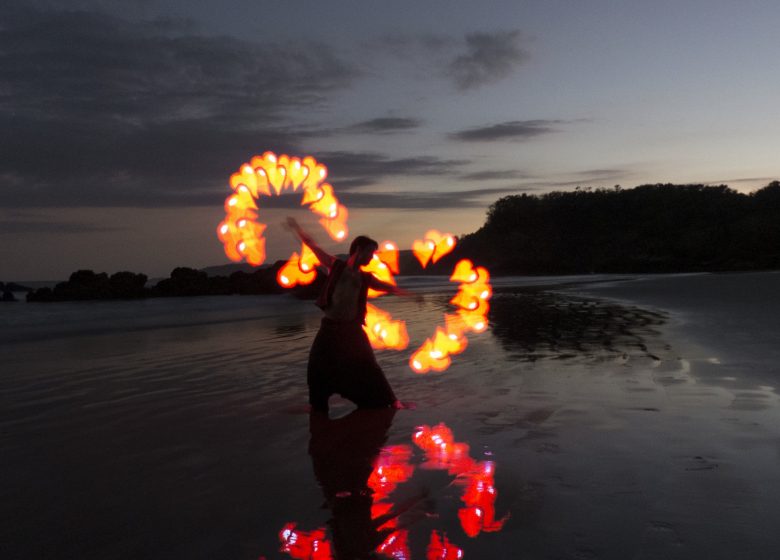Why Play Poi?
Poi is more than a way to relax and enjoy some flow. It’s a tool for understanding the connections of mind, body, and movement

Have you ever felt called to improve your coordination, balance, and over-all physical ability? If you have, poi might be the tool for you. It certainly was for me.
I developed a desire to explore physical movement when I was a teenager. On a hunch I took up Tai-Chi, which proved a perfect place to start. My teacher, Master Tong, had studied under great masters in China. He taught us traditional Tai-Chi theory, which included the use of circular and spiral motion, the body’s five “bows,” the stacking of body architecture, the raising of spirit and focus, and other concepts and techniques.
I became a believer in the intelligence and practicality of Tai-Chi, and although I practiced intensively and progressed steadily, I eventually longed for something more… upbeat.
Over the following years I trained in dance, Wushu, and Capoeira. Applying Tai-Chi theory always helped me progress quickly, and each art form taught me something fundamental about movement, yet none of them were quite what I was looking for.
I finally found “it” outside a dance party in British Columbia, where I witnessed a group of fire dancers playing with fire poi. Watching, I realized that my entire history of movement practices had been leading me to poi. I don’t know how I knew. I just knew. It was like the sky opened and a booming voice said, “Take up poi. You’ll understand later.” I was soon practicing with a pair of rolled up socks on shoelaces. To my delight, I discovered that poi are amazing movement exploration tools. They are guides. They are teachers. They are like Yoda, only smaller and on strings.
Poi are simply weights on the ends of tethers. By attaching one to each hand, they become extensions of our body. They literally magnify our movements, helping us to observe the accuracy of direction, timing, rhythm, and force. Once observed, the repetitive nature of poi proves ideal for developing motor skills, and the circular nature of poi encourages developing those skills through a full range of motion, on all planes. By exploring the positioning of our hands and body, particularly into areas where we usually don’t have a lot of skill (like behind our backs), we are able to develop a very thorough range of skill.
In Tai-Chi, all movement comes from the Dan-Tien (your movement-center: two inches below the belly button). The Dan-Tien is the fulcrum point of your body; a force forward from the right hand is executed with an equal force from the left leg. All Tai-Chi movements follow this principle. In many poi exercises, for proper timing, one hand must move in perfect symmetry or opposing symmetry with the other. We can apply Tai-Chi technique by relaxing the arms and initiating the movement from the Dan-Tien. As we play, all of our movements become increasingly fluid, natural, and precise, resulting in greater overall balance and whole body coordination.
The process can be like carving a rough block of wood into a sphere. Bumps and corners make movement awkward and limited. As the block becomes spherical, movement becomes smooth and centered. The rhythmical, circular motion of poi proves ideal for sanding away “bumps.” With enough practice, you can develop a felt sense for movement and space that seems to exist beyond your body. Getting even more metaphysical, the motion of poi is like that of a solar system or atom. The more spherical you become, the more you tune into patterns that lie at the center of all matter and energy.
Through poi I have enjoyed improvements of physical ability, as well as a revived sense of play, and an increase in discipline and self-esteem. Poi have opened new dimensions for me. I highly recommend giving it a try.






